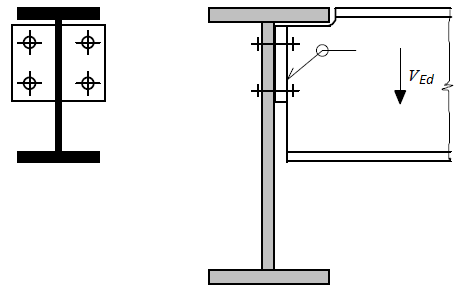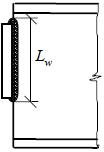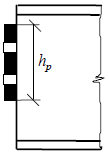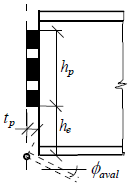Pinned end plate to beam
 Pinned end plate to beam detail
Pinned end plate to beam detail
The bearing capacity of the connection is given by the minimum
![]()
of following vales:
- The shear resistance of beam web Fvbw,Rd (usually critical component for this type of connection)
 The shear length of beam web
The shear length of beam web
- The bending resistance of beam web with gaps Mbw,v,Rd and shear resistance Vbw,v,Rd including an interaction of inner forces
- The resistance of n bolts nFb,v,Rd
- The bearing resistance of bolts in end plate nFb,b,Rd (can be calculated as a sum of bearing resistances of end and intermediate bolts for materials with sufficient ductility)
- The shear resistance of welds Fw,v,Rd
- The shear resistance of end plate Vp,v,Rd in the cross-section with gaps. This can be neglected if Av,net/Av> fy/fu. In the end plate cross-section is considered only a half of the force in a beam.
The bending resistance and the interaction with shear may be limiting for long end plates.
 Cross-section of end plate with gaps
Cross-section of end plate with gaps
The connection may be considered as a pinned one if the beam rotation does not cause the contact of bottom flange with a column The rotation capacity is greater than rotation of simple beam
![]()
Where is: | Lb |
|
E |
| |
Ib |
|
 Rotation of beam end
Rotation of beam end
The remaining tensile resistance for the interaction of tension and shear shall be able to transfer full plastic moment resistance of connected end plate. Therefore, the thickness of the plate should be limited
![]()
Where d is bolts diameter. Welds are designed in that way, that they are able to transfer full plastic resistance moment of the plate in tension.